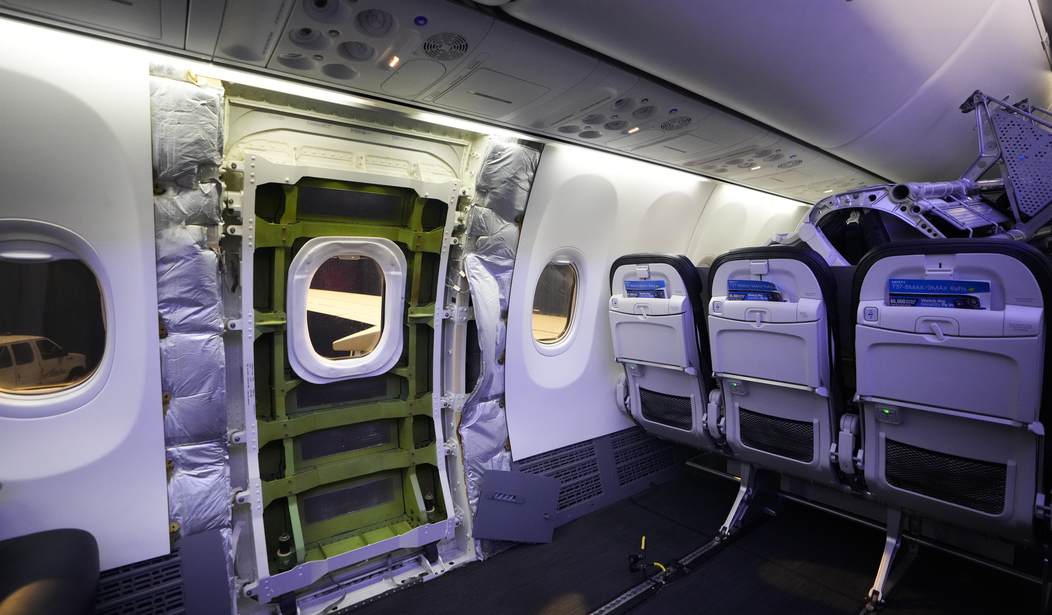Continuing our ongoing coverage of Boeing's "flying junkyards," the investigation into the blowout of a door plug on Alaska Airlines Flight 1282 over Portland last month is still ongoing. FAA Administrator Michael Whitaker said yesterday that the investigation will take six weeks to complete in full and the company is roughly halfway through the process. But Boeing is already releasing some of their preliminary findings, including photographs of some of the inspections being done. One of these photos has led investigators to confirm earlier suspicions that four main bolts used to fasten the door plug in place were not even installed, leading to the near-catastrophe. That's a fairly major oversight and it will likely lead to calls for stricter inspection protocols at Boeing, particularly for the troubled 737 MAX 9 line. (Associated Press)
Bolts that helped secure a panel to the frame of a Boeing 737 Max 9 were missing before the panel blew off the Alaska Airlines plane last month, according to accident investigators.
The National Transportation Safety Board issued a preliminary report on the Jan. 5 incident Tuesday.
The report included a photo from Boeing, which worked on the panel, which is called a door plug. In the photo, three of the four bolts that prevent the panel from moving upward are missing. The location of the fourth bolt is obscured.
The NTSB is working with Boeing on this and the photograph in question told the inspectors a few things. In it, you can see three of four locations where the mounting bolts were supposed to be installed on the door plug. The holes are empty. If they had simply come loose and fallen out, that would have been worrisome enough, but that apparently wasn't the case because the bolts would have been found inside the interior of the frame. If they had been correctly installed and the plug had blown out anyway, there should have been damage to the threads in the holes. But that wasn't observed either, so the only conclusion remaining was that the bolts were not in place.
Further maintenance records from the plane explained more of how this probably happened. The plug was originally installed by Spirit AeroSystems, a Boeing supplier. The plane was taken in for maintenance at Boeing's facility near Seattle when five damaged rivets were found around the door plug. In the process of replacing the damaged rivets, workers would have had to remove the four bolts holding the plug in place. It appears that they were likely not replaced.
Given all of the stress the plane is under during each flight, perhaps it's somewhat miraculous that the plug stayed put for as long as it did. But that doesn't change the fact that a serious error took place and it could have wound up causing a tragedy. Whenever maintenance and repair work is done on one of these aircraft, it seems clear that some sort of supervisor or safety engineer should inspect the finished work before the equipment is reassembled. Having more than one set of eyes on the project should eliminate or at least vastly reduce the possibility that a technician might leave four empty boltholes sitting there.
What the NTSB seems likely to conclude is that this was less a failure of an individual technician and more of a process failure in general. A complete review of all of Boeing's procedures and inspection regimens is no doubt in order. It will be a major pain for them, but they have the lives of tens of thousands if not millions of people in their hands each day. Many people are nervous enough about flying, to begin with. Their confidence isn't bolstered when Boeing's own retired managers and engineers advise the public to not fly on the 737 MAX 9 planes. Everyone involved will simply need to do better.








Join the conversation as a VIP Member